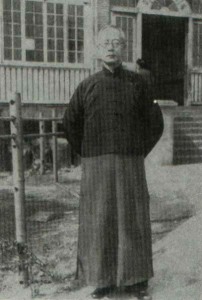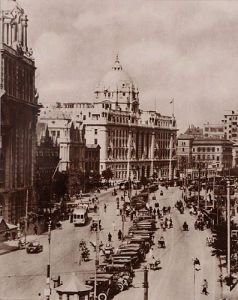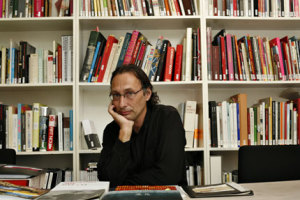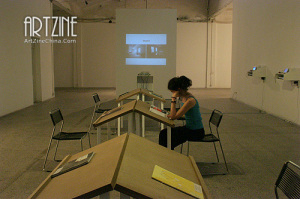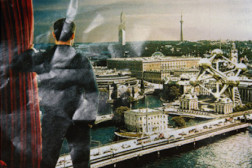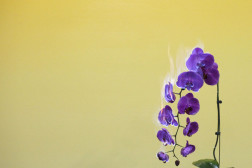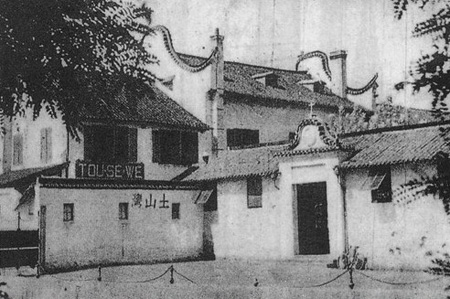
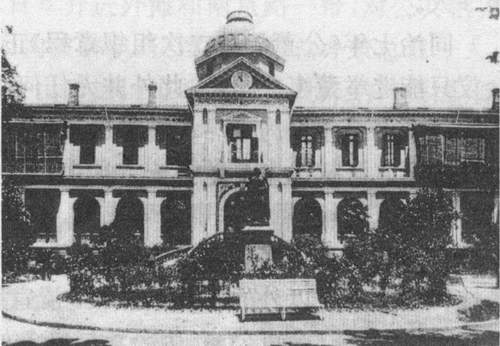
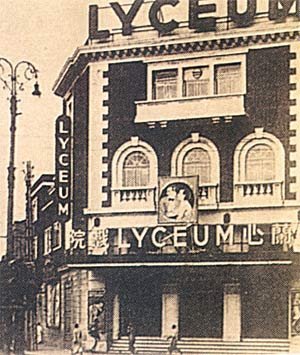
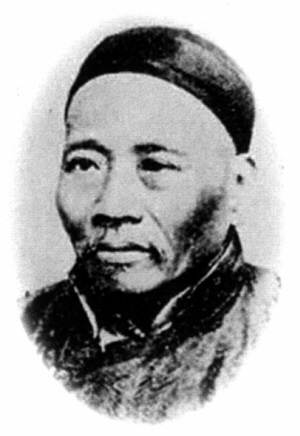

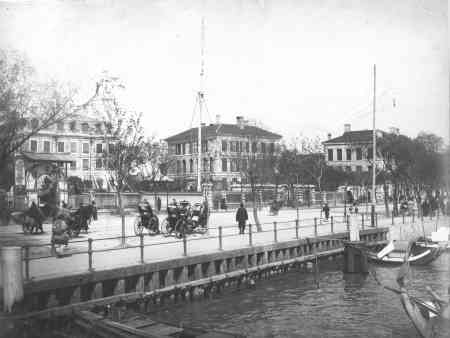

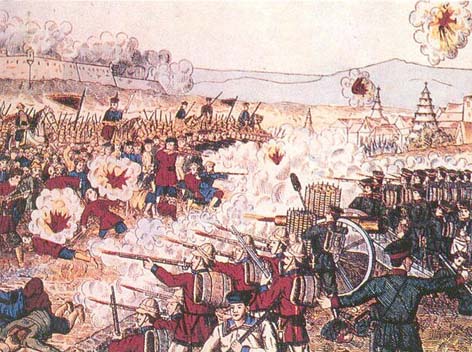
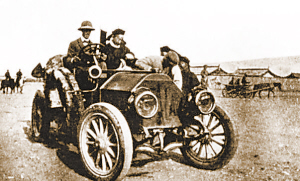
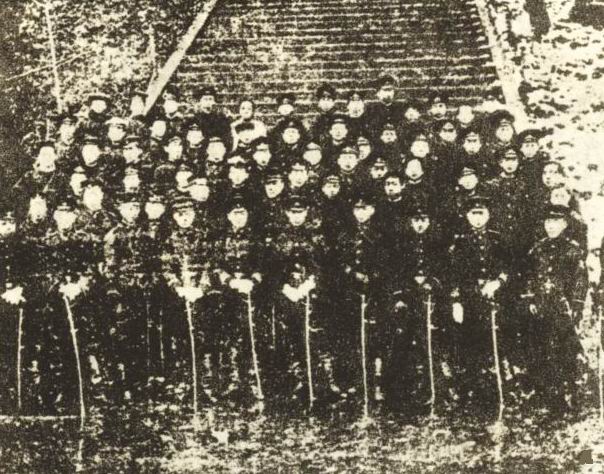

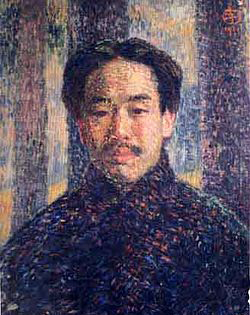
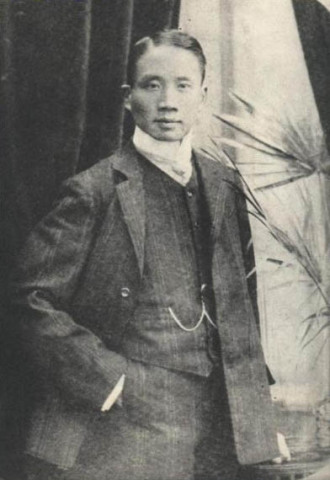
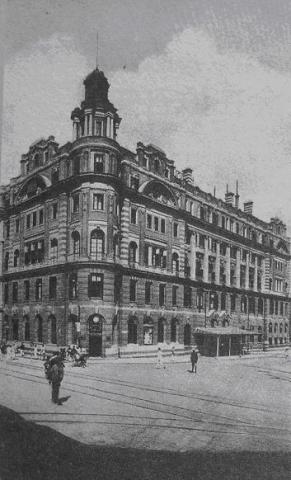
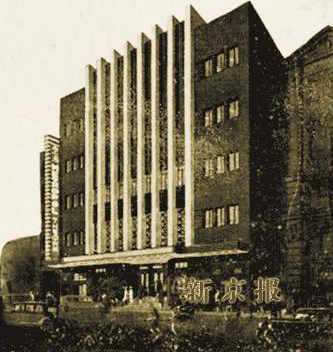

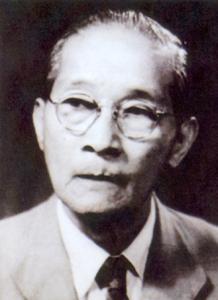


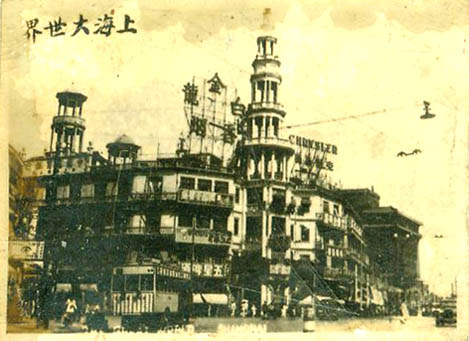
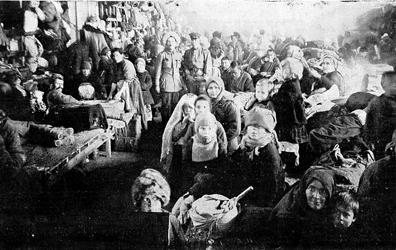

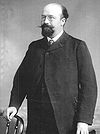

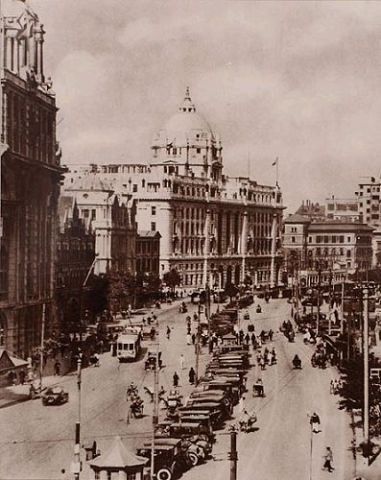


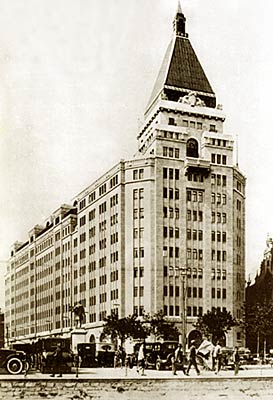
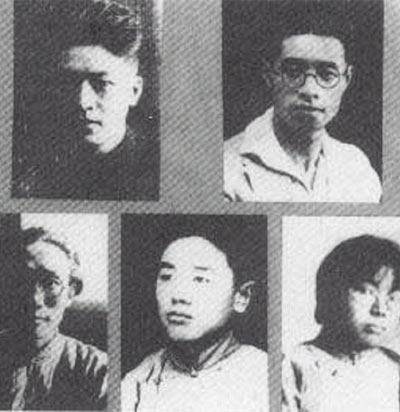
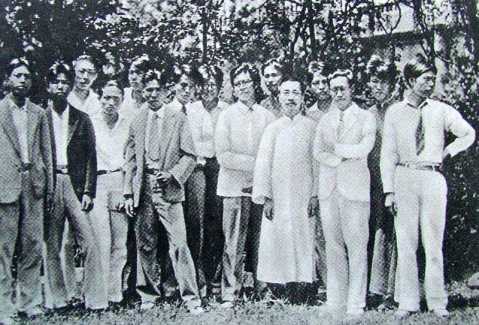
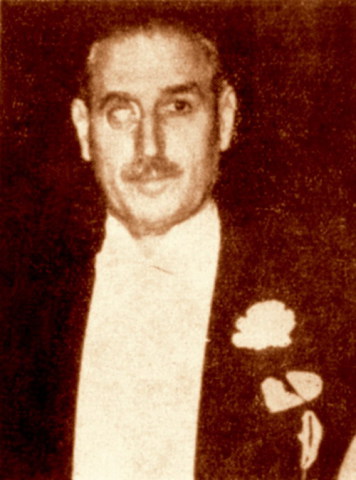
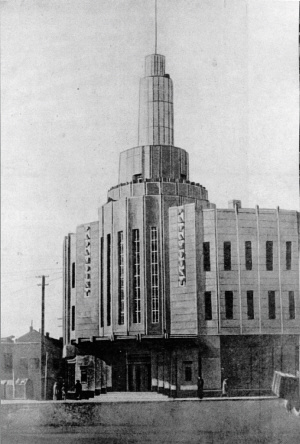
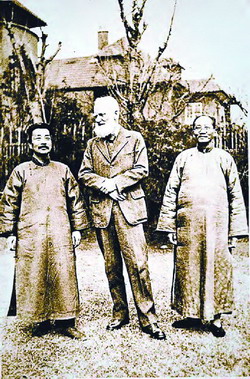
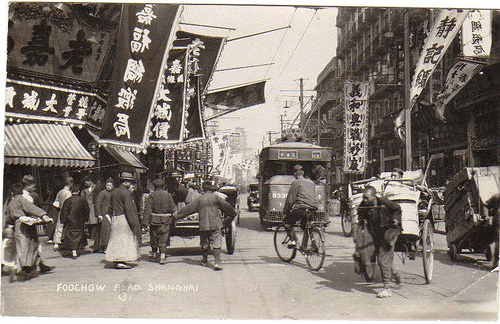
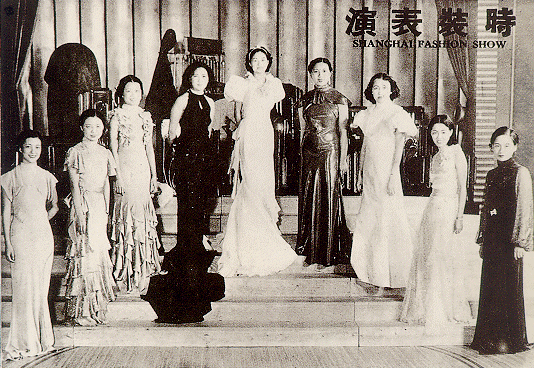
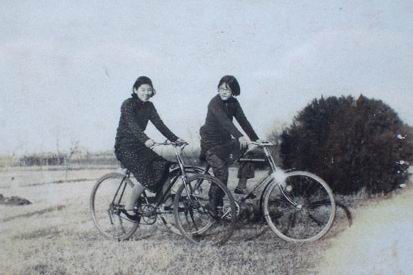
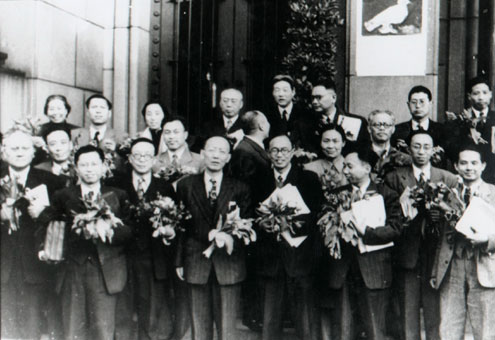
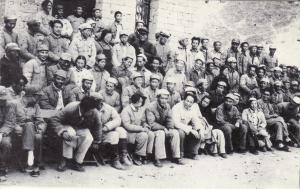
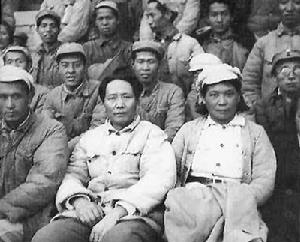
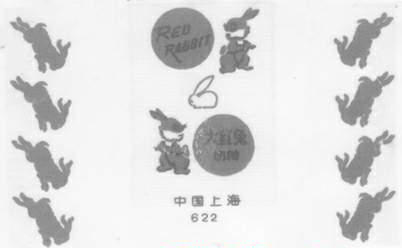
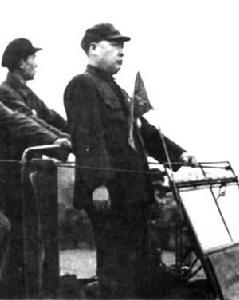
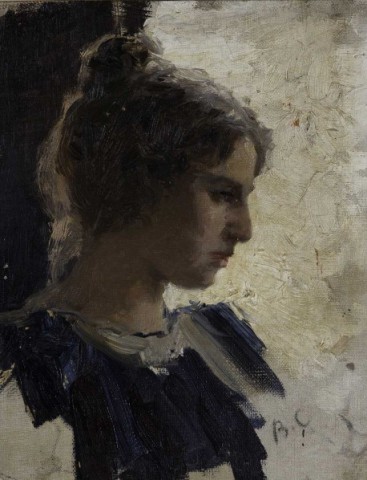


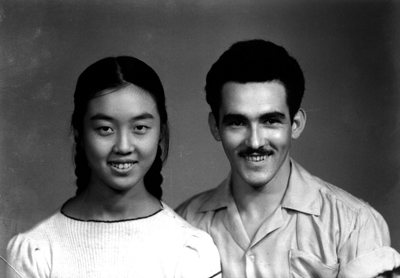
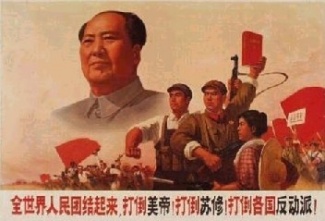

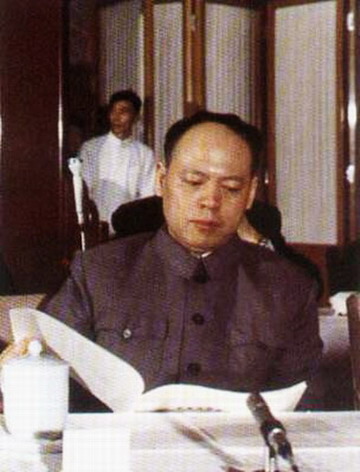
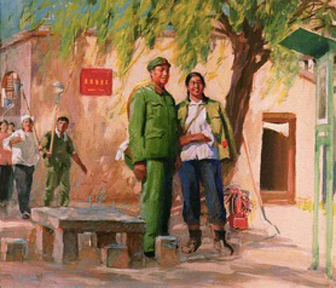

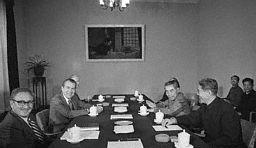

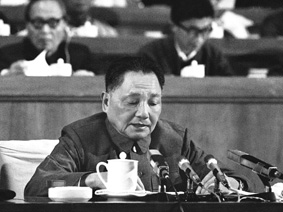
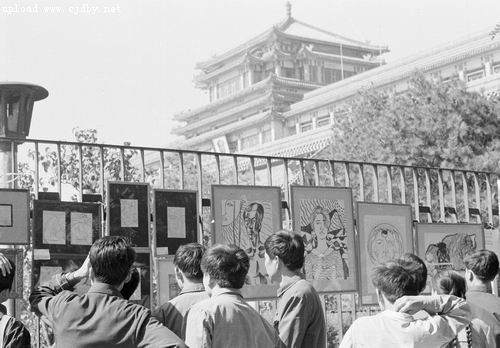
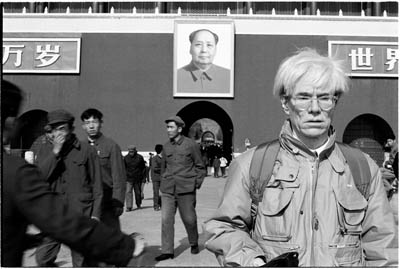
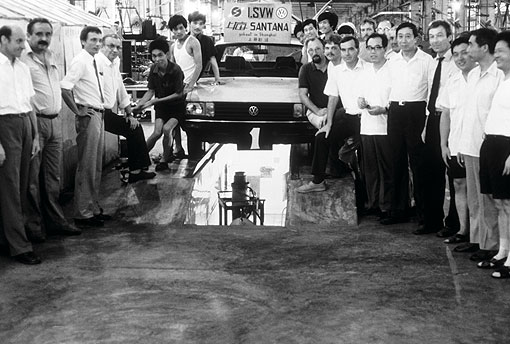
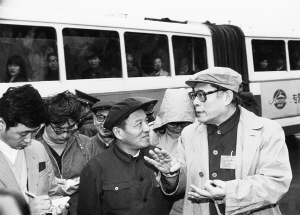



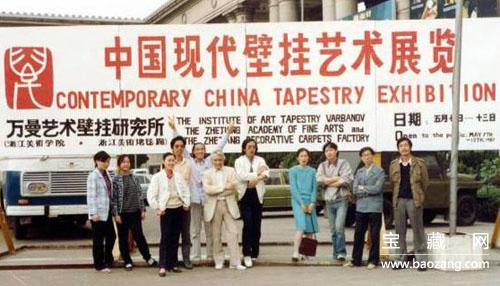
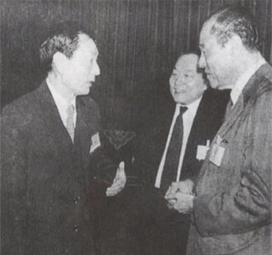
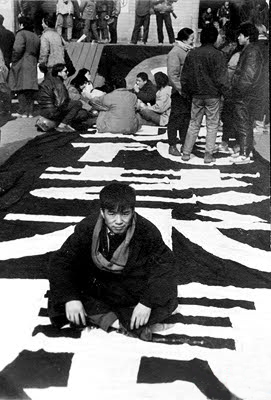

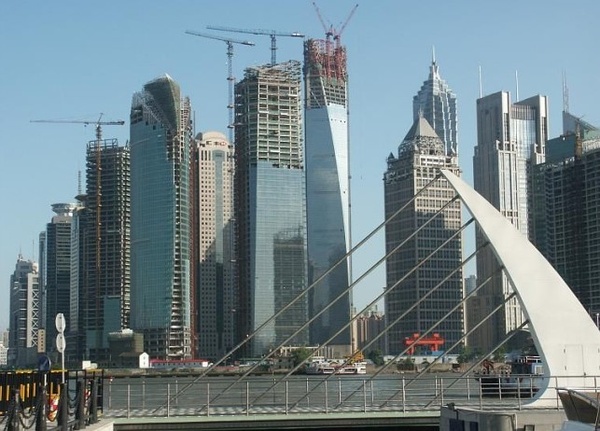
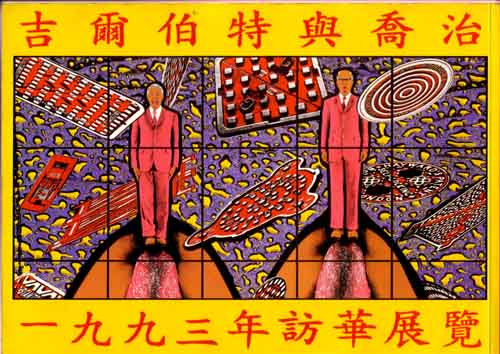
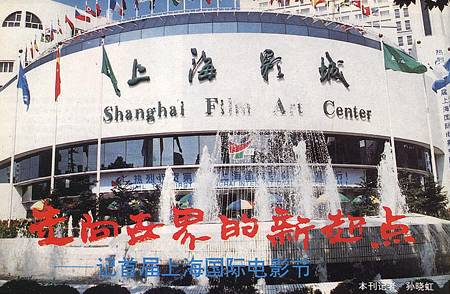
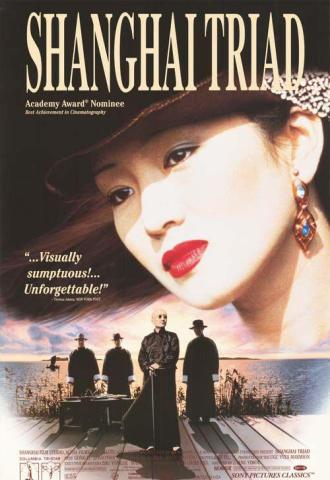
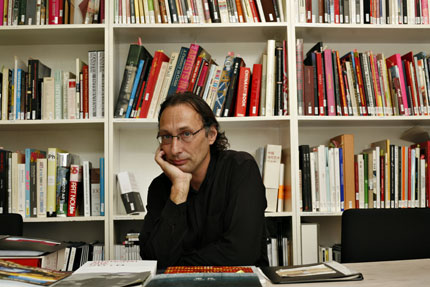
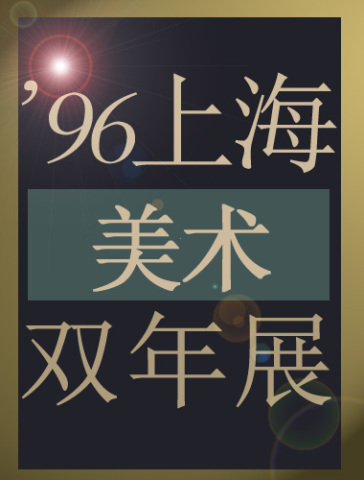
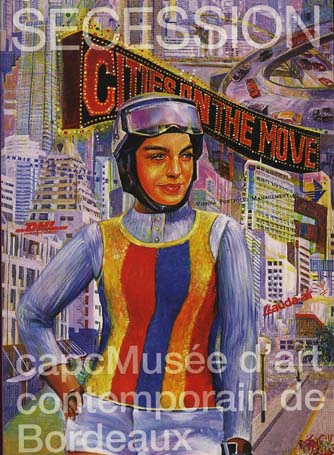
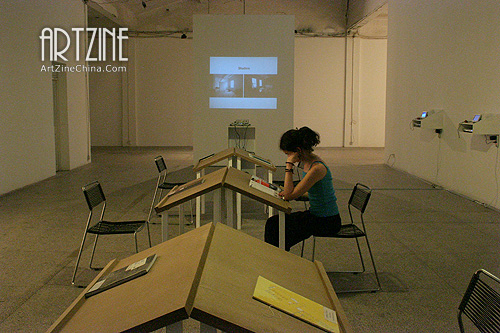
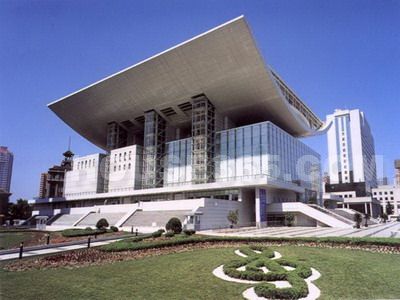
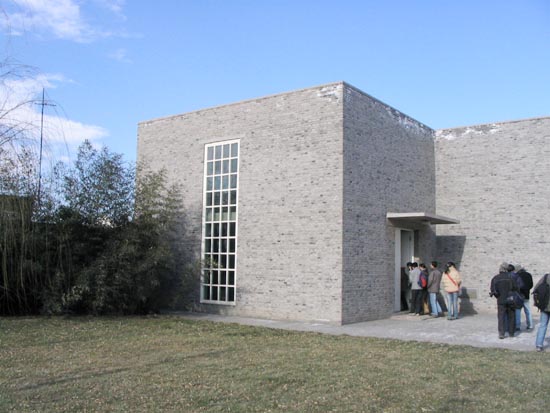


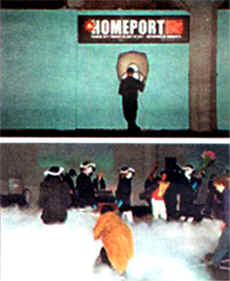
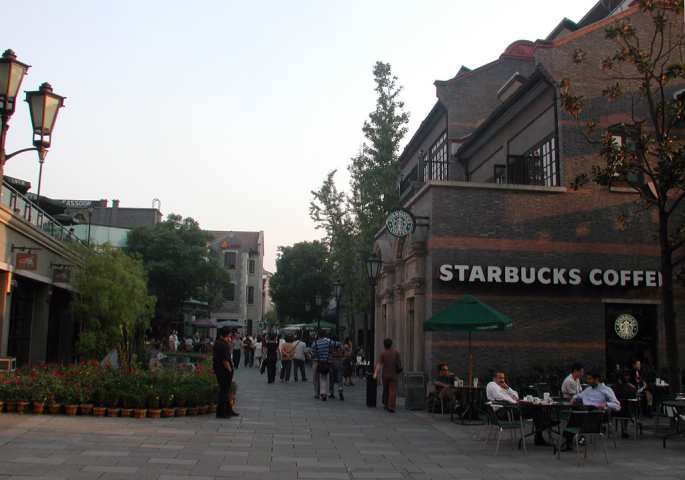
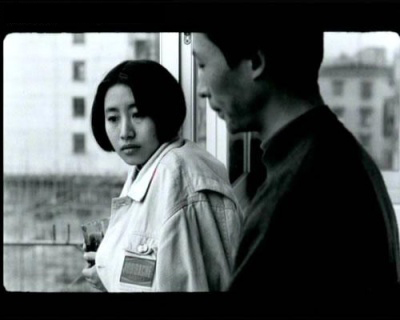
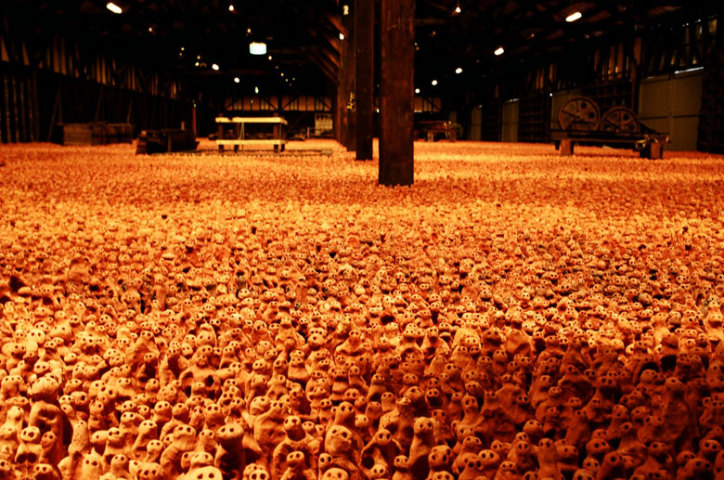
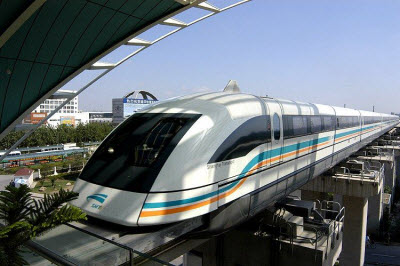
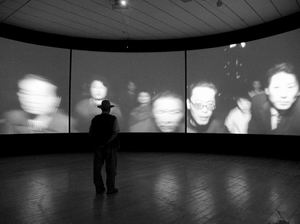
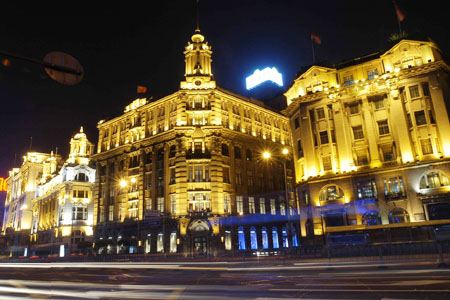
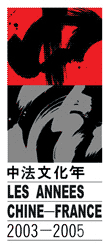
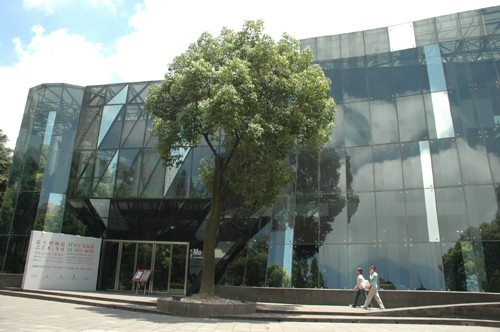
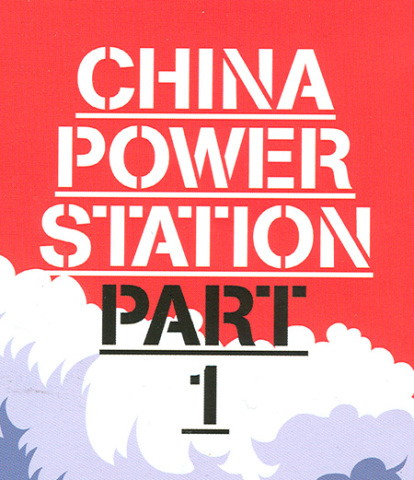
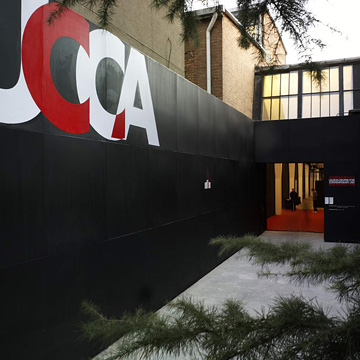


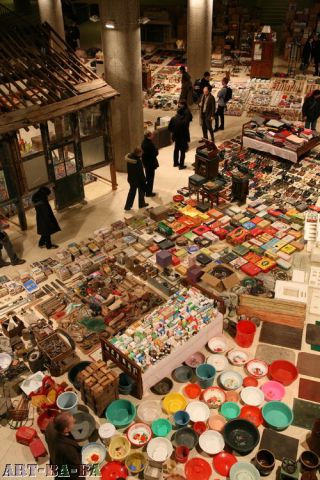

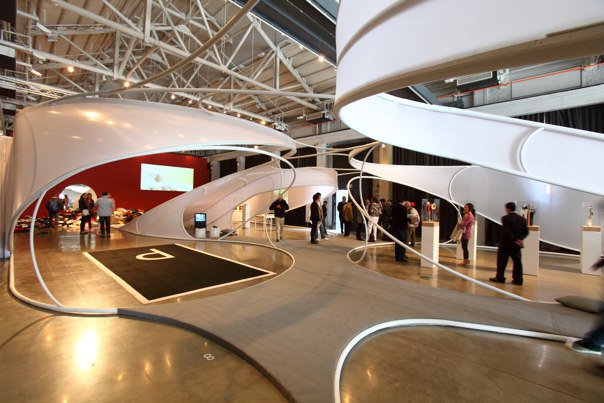

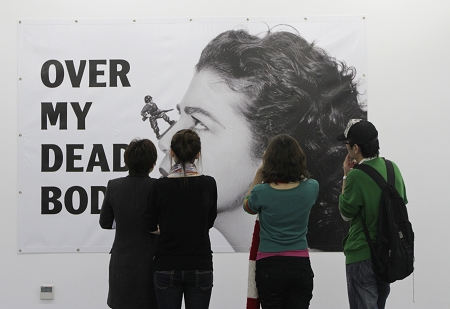
Points of Encounter – a Timeline to be Completed
For the occasion of Double Infinity book published April 2010. See below all the credits. If you would like to make edits/additions or tweaks, please contact us. Once we receive your notes, we will add your name to the contributors!
Timeline
Shanghai
1852
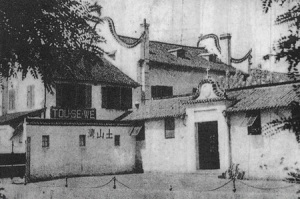
The Tushanwan Arts and Crafts Centre
Founding of the first Jesuit school teaching Western painting by Jesuits – the Tushanwan Arts and Crafts Centre (Tushanwan huaguan).
1862-1863
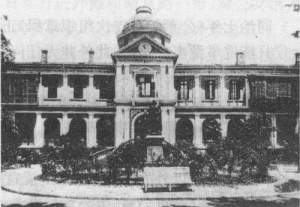 Shanghai Municipal Government in the French Concession
Shanghai Municipal Government in the French Concession
An international settlement is established in Shanghai.
1866
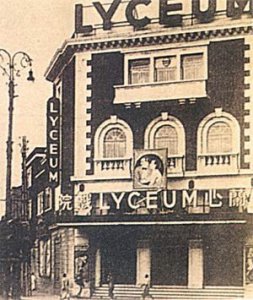 The Amateur Dramatics Club located in Lyceum Theatre
The Amateur Dramatics Club located in Lyceum Theatre
The Amateur Dramatics Club is formed within the International Settlement.
1867
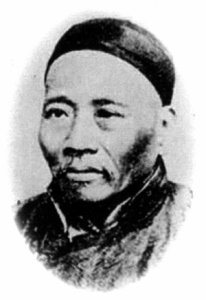
Wang Tao
Wang Tao is the first Chinese citizen to visit the World Expo at the Crystal Palace in London.
1872

The earliest Chinese students who studies in America
Chinese students go to the USA, England, and France.
1872-1897
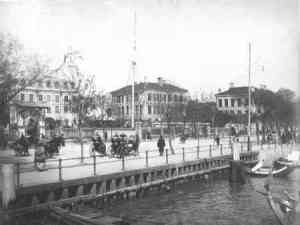
The Bund, 1890s
Bund architecture becomes visible.
1886
Wang Tao becomes head of Gezhi College in Shanghai, where he promotes Western-style education.
1890
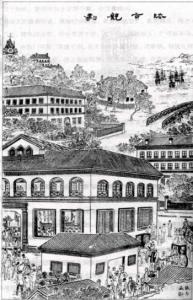
Jottings from Carefree Travels by Wang Tao
Wang Tao publishes his travelogue, Jottings from Carefree Travels. Thanks to Chinese readers, many translations of Western texts become available.
1898-1901

The Boxer Rebellion
Boxer Rebellion – an anti-imperialist, anti-Christian movement by the Righteous Harmony Society (Yihe tuan) or Society of Righteous and Harmonious Fists.
1901

Motor cars in Shanghai
Motor cars arrive in Shanghai in the form of two Oldsmobiles. There is much consternation among officials of the Municipal Revenue Office as to how they should be registered. The problem is soon overcome, however, and by the late 1920s there are 7,000 cars registered in Shanghai.
1903
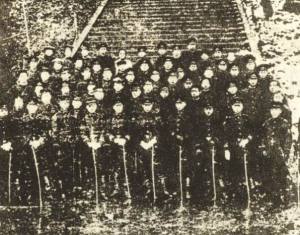
Hubei Students study in Japan
More than 1000 students study in Japan, which has strong cultural links to Germany from the end of 19th century onwards. [1]
1904
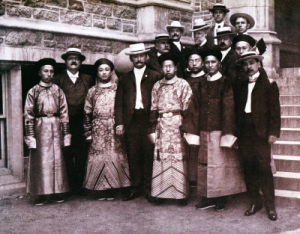
Chinese officials at the Expo venue, 1904
China participates in St Louis World’s Fair.
1905

Self-Portrait as Li Shutong before entering monkhood
Li Shutong (1880–1942) goes to Japan to study watercolour and oil painting at the Tokyo School of Fine Arts in Ueno Park (Tokyo Butsu Gakku).
1906
15th December, the American Court for China is established in Shanghai.
Social Shanghai is launched. A glossy monthly journal, it details western social happenings and events in Shanghai.
1907
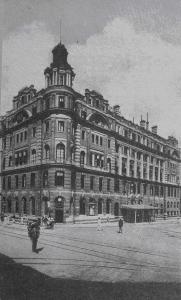
The Palace Hotel, 1907
The Palace Hotel opens on Nanjing Road.
1908

Cai Yuanpei in Germany
Cai Yuanpei studies in Berlin and Leipzig and becomes acquainted with the work of of Käthe Kollwitz, Picasso and Kandinsky.
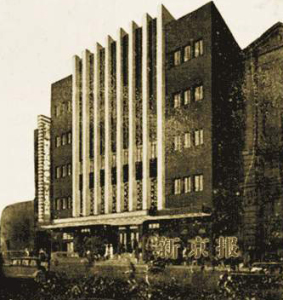
Hongkou Grand Theatre
Opening of the first movie house in Shanghai
The Astor House Hotel
Huang Xing,16th January, the Astor House Hotel
1911
Gao Jianfu (left), Chen Shuren (right)
Gao Jianfu (1879-1951), Gao Qifeng (1889-1935) and Chen Shuren (1883-1949), the three founders of the Lingnan School, study in Japan, 1906-1911 and participate in the Republican revolution of 1911. In Japan they were inspired by the art of the late Meiji period. They became revolutionaries during that period and returned as cosmopolitan and nationalists convinced of the need to remake China – they were the only ones to work out a theoretical approach to the problem of how to modernize Chinese art while retaining its distinctive identity.
The Gao Brothers in Shanghai 1912-1917 run an art bookstore (Shenmei shuguan) and an art publishing house. This was a private capitalist venture, but its purposes were public and aesthetic. Gao Jianfu publishes the magazine True Record (Zhen xiang huabao) in 1912. Liu Haisu remembers the bookstore as the first place to sell paintings publicly.
1912

Chen Baoyi in Tokyo with his wife
Chen Baoyi (1893–1945) studies in Japan.
1917

White Russian refugees fleeing to Shanghai
White Russian refugees, fleeing the effects of the Bolshevik Revolution, begin arriving in Shanghai.
In April, opium shops are formally closed and the transportation of opium banned.
1917
Czech diplomat Vojtech Chytil (1896–1936) exhibits watercolours in Beijing, later befriends Qi Baishi and others.
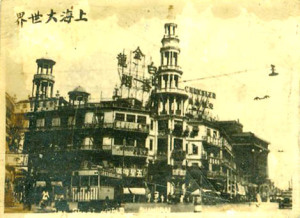
The Great Entertainment Centre
14th July, the Great World Entertainment Centre opens. A huge six-story facility, it features all-day performances of music, opera, magic and movies, with ancillary attractions such as brothels and fortunetellers available.
1919
May 4th Movement: an intellectual turning point in China, which radicalised Chinese intellectual thought vis-à-vis Western models of thinking.

Uchiama Kanzo and his bookstore
The Japanese intellectual, Uchiama Kanzo (1885–1959), opens his famous bookstore in Shanghai, also selling books on Western art.
1920–1929

André Claudot
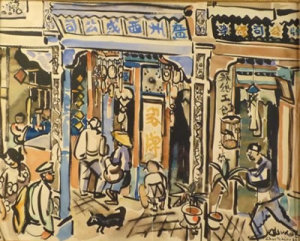
Scène de rue à Chaotchéou by André Claudot, 1929
French artist André Claudot exhibits his work in China and teaches at the Academy of Fine Arts in Hangzhou.
Feng Zikai (1898–1975) studies in Japan.
Xu Beihong (1895–1953) studies in Berlin.
Teng Baiye (1900–1980) studies sculpture and painting in Seattle, where he meets Mark Tobey.
Li Haisu (1896–1994) studies in Europe. He in turn teaches Pan Yuliang, China’s first female artist to bring western influence into Chinese painting.
Artist Georgette Chen (1907–1993) studies painting with Russian artist Victor Podgoursky in Shanghai. Her works are selected for the d’Automne and the Musée du Jeu de Paume in the 1930s.
The Futurist Manifesto (by F. T. Marinetti, 1909) arrives to Shanghai by way of Japan.
Comintern representatives sent to Shanghai and Beijing. Tretiakov writes I Want a Child and Roar China!.
To stimulate Chinese artists, Lu Xun, writer and father of the printmaking movement, publishes portfolios of foreign prints by Soviet artists and left-wing German activist artists, including Käthe Kollwitz.
1923
23rd June, the Hong Kong and Shanghai Banking Corporation opens the doors of its new headquarters on the Bund. It is ‘the most expensive building constructed in Shanghai to that time.’
1927

Chiang Kai-shek and Soong Mei-ling at their wedding
1st December, Chiang Kai-shek marries Soong Mei-ling, the youngest of the Soong sisters and sister of Finance Minister T. V. Soong, at a high society event held at Shanghai’s Majestic Hotel.
1928
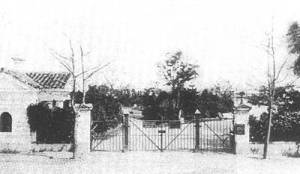
Foreign park, 1928
Foreign parks open to Chinese residents of Shanghai.
1929
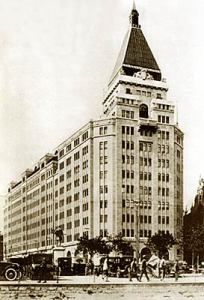
The Cathay Hotel
25th September, the Cathay Hotel (now the Peace Hotel), commonly described as the most luxurious in Asia, opens on the Bund.
1930-1939
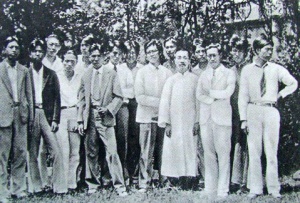
Lu Xun and The Woodcut Research Society members
Lu Xun organises exhibitions of German and Russian printmaking in Shanghai. He also arranges for the Japanese engraver, Uchiyama Kakichi, to teach young Chinese artists. The Woodcut Research Society is established.
Xu Beihong organises exhibitions of Chinese modern art in France, Italy, Germany and the Soviet Union.
Xu Beihong and Liu Haisu travel to Southeast Asia. Li Haisu captured in Indonesia by Japanese and sent back to Shanghai.
The Beijing Opera performer, Mei Lanfang tours Russia and meets Bertold Brecht.
Tretiakov moves to Beijing as Head of the Comintern and based on his experiences there writes his “factographic” [3]novel Den Shi-Hua about the life of a Chinese worker.
The Modern Prints Society publishes the first issue of Modern Prints in December 1934, which contains its de facto manifesto.
1930

The League of Leftwing Writers
2nd March, the League of Leftwing Writers is founded by, amongst others, Lu Xun.
1931
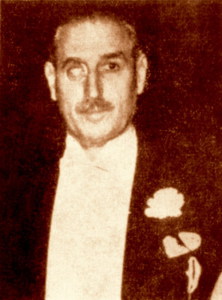
Victor Sassoon
In June, businessman Sir Victor Sassoon relocates to Shanghai from Bombay. ‘ Sir Victor had called the editor of the Times of India into his office to tell him that he was going to leave Bombay for ever and settle down in China.’ A distinguished Sephardic Jew and horse racing fanatic, Sassoon and his family have long ties with Shanghai as one of the leading exporters of opium from India to China. He also built the Cathay Hotel in 1929.
1933
Acclaimed Shanghai-based writer Mao Dun’s most famous novel, Midnight, is published. Portraying the life of urban industrialist Wu Sunfu in Nationalist China, it highlights the immense suffering of the workers in Asia’s most glamorous and affluent city.
In June, the Grand Theatre opens. It is the first modern cinema in East Asia, with seating for 2,000 moviegoers.
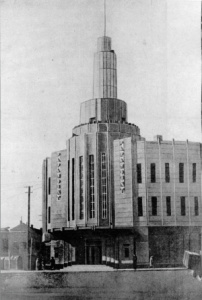
The Paramount
15th December, the Paramount Ballroom opens for business. This iconic Art Deco style building is funded by a group of Chinese bankers. It quickly becomes both a meeting place for the Shanghai elite and a financial disaster- it will be on the brink of bankruptcy three years later as its owners fail to balance books against the unpaid bills of its many clients.
1934
Young woodcut artist Liu Xian (1915–90) makes a series of twenty-eight woodblock prints as illustrations of a play titled Roar, China! by the Soviet futurist poet and playwright Sergei Tretiakov.
Release of Shanghai Express, starring Marlene Dietrich as Shanghai Lilly.
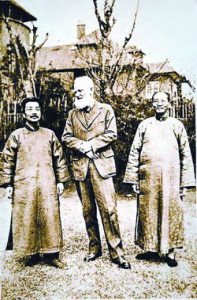
Lu Xun, George Bernard Shaw and Cai Yuanpei
George Bernard Shaw visits Shanghai.
The Hungarian architect, Ladislav Hudec (1893-1958) builds Asia’s tallest building in Shanghai.
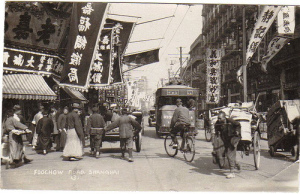
Fuzhou Road, Shanghai in 1935
Shanghai becomes the fifth largest city in the world, with 3.5 millinon inhabitants.
1936
Gao Jianfu lectures at National university in 1936, the lectures are subsequently published in 1936 as “My Views on Contemporary National Painting” (guo hua) – the purposes of art, he argues, are social and public and not the private self-expression of literati painters. Gao Qifeng’s work remains true to the formula learned in Japan (especially Shijo school) for a national art that is modern but still linked to tradition. Gao Jianfu discovers Xu Beihong (1896-1953) and helps launching his career.
1937
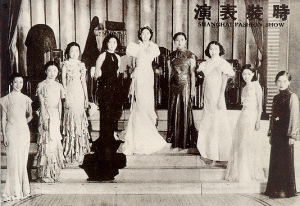
Chinese dance hostesses in the Paramount
The Paramount Ballroom is converted into a taxi dance hall with Chinese dance hostesses. It will continue in this mode until 1949, when it becomes a cinema for the new regime, renamed Hong Du or Red Capital Cinema.
1940-1949
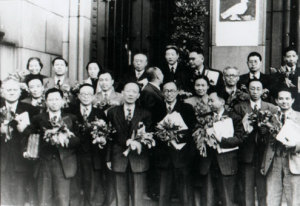
Xu Beihong in Prague, 1949
Xu Beihong goes to Prague.
1940
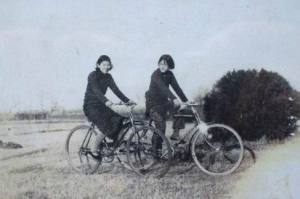
Two Chinese women riding Forever bicycles
The iconic Shanghai brand Forever Bicycles is established.
1942

Yan’an Talks on Literature and Art
Yan’an Talks on Literature and Art by Mao Zedong. The Yan’an Talks become the officially approved style of presentation in art and literature from the founding of People’s Republic of China in 1949 until after the death of Mao in 1976.

Mao Zedong and other representatives at Yan’an talks
May, Mao Zedong, leader of the Communist movement, presents a policy on literary and artistic creation during the Talks on Art and Literature in the Communist base at Yan’an, Shanxi province. He states that all creation should be in the service of the people and the Party.
1943
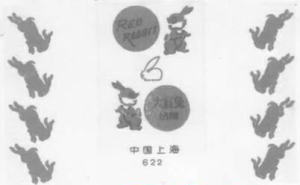
Wrapper of the White Rabbit
White Rabbit, the famous Shanghai brand of sweets, is launched, under the name of Mickey Mouse.
1949
Shanghai Mayor Chen Yi launches a campaign to reform the city, focused on sanitization of the streets. Reform begins with a series of changes to the boundaries of the former foreigh settlements, which have previously subdivided the city. The aim is to eradicate a physical source of social division within the city.
In November, American films are officially taken off the screens in Shanghai’s forty cinemas. They have previously attracted monthly audiences of over 1 million Chinese residents.
1950-1959
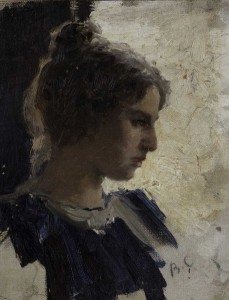
Portrait of a Young Lady by Ilya Yafimovich Repin
A decade of Soviet influence in oil painting, architecture and sculpture. Books on Russian art begin to replace those on French impressionism in Chinese bookshops.
1951
An exhibition of Soviet propaganda and satirical art is held at the Central Academy in Beijing. Standards for realistic oil painting established by Jiang Feng at the Central Academy in the 1950s are imposed on art schools across China, particularly at the Hangzhou Academy.
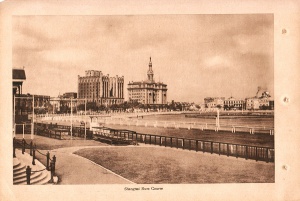
Shanghai Race Course
17th September, the new government in Shanghai reclaims the former Race Course and begins building the People’s Park, which is completed a year later.
1954

The Sino-Soviet Friendship Building
4th May, Construction of the Sino-Soviet Friendship Building begins in Shanghai. It is the largest civil construction in Shanghai, and its 109-metre spire makes it the highest point in the city.
1956
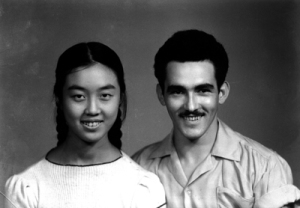
Song Huai-Kuei and Maryn Varbanov
Song Huai-Kuei marries the Bulgarian artist, Maryn Varbanov. This is the first mixed marriage in the new China.
1960-1969

A poster saying “Fight against the Soviet!”
The Sino-Soviet Split.
1964

Model Opera
5th June-31th July, the first model operas are performed at a festival in Shanghai. The Red Lantern, Shajia Village, Taking Tiger Mountain by Strategy and Raid on White Tiger Regiment are variations on original Peking operas reworked by Mao Zedong’s wife Jiang Qing. They feature contemporary socialist concerns, and will be the main form of entertainment for the people over the next decade.
1965
On 10th November, polemicist Yao Wenyuan, writing in Shanghai, attacks the story of Hai Rui is Dismissed from Office written by former Beijing vice-mayor Wu Han. In his criticism, Yao discredits Wu’s work, suggesting that its ‘implausible’ characterization is, in fact, a veiled criticism of Mao. This triggers the power struggle that will pave the way for the Cultural Revolution.
1966-1976

Art for the people
Art schools and universities across the country are closed down during the Cultural Revolution in the People’s Republic of China.
Artists create work that reflects the revolutionary spirit of the time – art for the people. Oil painting in social realist style replaces traditional ink painting. Red Guards stage large-scale public art exhibitions, with posters and woodblock prints conveying the fervour of this movement. Painting non-revolutionary subjects at this time is considered an act of transgression.
The Yang Ban Xi – Revolutionary Model Opera – is the only medium of artistic expression allowed to be performed or broadcast in China, although it incorporates various Western techniques in cinematography, music, dance and ballet.
1967
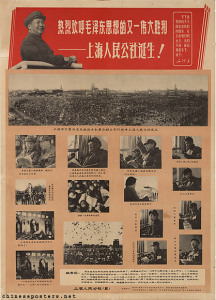
Warmly Welcome Another Great Victory of Mao Zedong Thought
5th February, the Shanghai People’s Commune is established as an attempt to take power of the city. The Commune lasts less than one month, before being replaced by the Shanghai Revolutionary Committee is a three-way alliance of Red Guards, Party cadres and army men with Zhang Chunqiao, later to become one of the Gang of Four, in charge.
15th February, Hunan native Li Jinhui, a singer and song writer known as the father of popular music who has become a prominent figure in Shanghai artistic circles, dies.
1972

Special Envoy Henry Kissinger, Richard Nixon, Zhou Enlai, and others
28th February, the Shanghai Communique is signed by China and the US. Nixon’s visit attempts to formulate ways that the two nations can work to normalize diplomatic relations and expand trade.
1978-1979

Deng Xiaoping talking on the conference, 1978
Deng Xiaoping introduces economic and social reforms emphasising increased openness to capitalism and Western culture.
1978
A January exhibition of French 19th century rustic landscape painting at the Gallery in Beijing contributes to the emergence of a new form of critical realism later in the year.
The Review of Foreign Art (Guowai meishu ziliao), later renamed the Journal of Art Translation (Meishu yicong), is established.
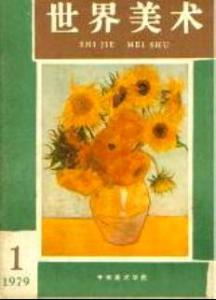
The first issue of World Art
World Art (Shijie meishu), an academic journal of the Central Academy of Fine Arts, becomes the major periodical source for Western art movements of the 1970s and 80s.
1979

The Stars group exhibition, 1979
The Beijing Spring of 1979–81 kickstarts a new wave of creative energy for the coming decades. China’s first modernist show since the 1950s: the Stars group exhibition by self-taught artists displaying their art works on the steps of the National Gallery in Beijing. The work was influenced by Impressionism and Postimpressionism and considered radical in the post-Cultural Revolution context.
1981
American Paintings from the Boston Museum of Fine Arts (with work by Jackson Pollock, Franz Kline, Helen Frankenthaler, and Jules Olitski) is the first “official” exchange exhibition, organised by the US Government and presented at the Zhongguo Meishuguan (Chinese National Art Gallery) in Beijing and the Shanghai Museum of Art. 30,000 catalogues are sold out in one week.
Ai Weiwei moves to the USA, living there until 1993, mostly in New York.
1982
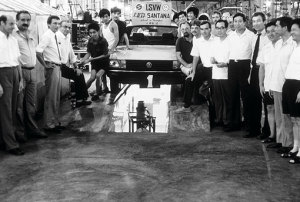
Volkswagen’s factory in Shanghai in 1980s
German car manufacturer Volkswagen opens its first factory in Shanghai.
The Armand Hammer collection of paintings is shown at the National Museum of Art in Beijing.
Authorities launch the Anti-Spiritual Pollution Campaign in early 1982, condemning three westernising trends in art that appeared since the end of the CR: individualistic values, “art for art’s sake” and abstraction.
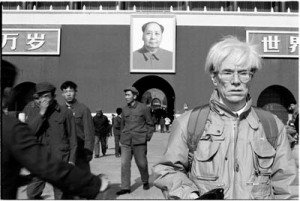
Andy Warhol in Beijing, 1982
Andy Warhol visits China with photographer Christopher Makos.
1983
Paintings by Edvard Munch are exhibited in Beijing and Kunming.
Work by Pablo Picasso is shown in Beijing and Shanghai.
1984
Shanghai is one of fourteen Chinese cities declared open to foreign investment.
1985

Jiang Zemin
Jiang Zemin is appointed Mayor of Shanghai.

The poster of Robert Rauschenberg’s exhibition in China
Beginning of the enlightening collectivist era in Chinese modern art (through 1989). Continuous translation of works by Winckelmann, Wolfflin, Gombrich, Popper, Hegel, Schopenhauer, Nietzsche, Bergson, Sartre. Robert Rauschenberg’s Rauschenberg Overseas Culture Interchange, better known as ROCI, opens at the Beijing National Gallery and has a pofound impact on the artists of the 85 Movement. Rauschenberg lectures at the Central Academy of Graphic Art in Beijing and participates in a discussion with the artists of the Anonymous Painting Group (Wuming huahui).
1986
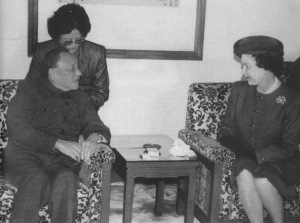
Deng Xiaoping meeting Queen Elizabeth II
In October, Queen Elizabeth II of the United Kingdom visits Shanghai. For the visit, the government sandblasts the buildings along the Bund. Big Ching, modeled on Big Ben, on top of the Customs House Building, is restored, after its mechanism was removed during the Cultural Revolution.
Cai Guoqiang moves to Japan.
Chen Zhen moves to Paris.
1987
December, the Shanghai Film Archive is established.
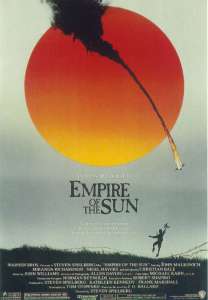
The poster of Empire of the Sun
On the 9th December, Steven Spielberg’s film Empire of the Sun, based on the memoirs of British writer, J. G. Ballard, who grew up in Shanghai and was interned in the city during the war, is released. Many Shanghai scenes are recreated in Elstree Studios in London while Sunningdale in Berkshire doubles for Ballard’s home in the Western Roads area of Shanghai. However, filming also takes place on the Bund.
In November, Jiang Zemin is promoted to Party Secretary of Shanghai.
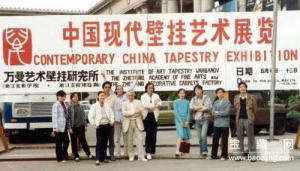
Contemporary China Tapestry Exhibition
The Varbanov Tapestry Institute at the Zhejiang Academy of Art in Hangzhou exhibits works in Shanghai. Works by Bulgarian artist Maryn Ivanov and his protégés, Gu Wenda and Shi Hui, who later participate in the 13th Biennial in Lausanne, together with Liang Shaoji.
1988

Zhu Rongji (Left)
On the 25th April, Zhu Rongji takes up his new appointment as mayor of Shanghai.
1989
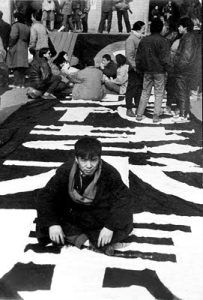
China: Avant-garde, 1989
The Student Movement of 1989 China: Avant-garde opens at the National Art Gallery in Beijing, marking a culmination for the Chinese modern art movement and the ‘85 Movement.
Huang Yongping participates in Magiciens de la Terre at Centre Georges Pompidou, Paris, and moves to France. Many other artists leave for USA, Australia, Japan and France.
1990
On the 19th January, construction work begins on Shanghai’s first subway line.
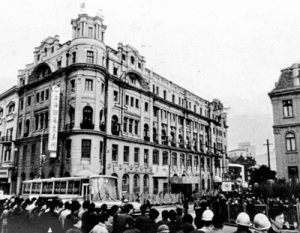
The opening ceremony of the Shanghai Stock Exchange
On the 19th December, the Shanghai Stock Exchange (SSE) opens for business. The first Stock Exchange, opened 1920, was housed in the Astor House Hotel until 1949.
1991
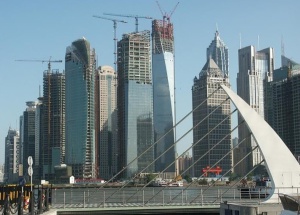
Lujiazui under construction at the start of 21st century
On the 6th September, Shanghai Development Corporation invites five international architectural firms to submit proposals for a new financial district to be located in Pudong’s Lujiazui area.
1993
Jiang Zemin becomes President of the PRC.
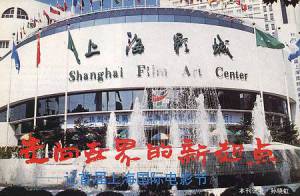
The poster of the Shanghai International Film Festival, 1993
During 7th-14th October, the Shanghai International Film Festival is launched.
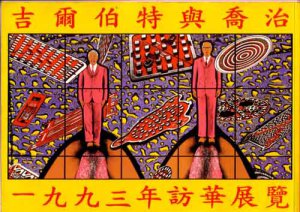
The poster of Gilbert and George’s China exhibition, 1993
Gilbert and George’s China exhibition is held at the National Art Gallery in Beijing and the Shanghai Art Museum.
Chen Tong establishes the Borges Libraria, an important venue for contemporary art in Guangzhou, and publishes contemporary Western literature and art theory.
“Their Irony, Humour (and Art) Can Save China”, by Andrew Solomon, is published in the New York Times. It is the first mainstream article on the art scene in China.
The first exhibition of Chinese artists is presented at the 45th Venice Biennial.
1995
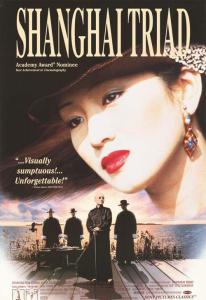
Shanghai Triad, 1995
The film Shanghai Triad, directed by Zhang Yimou and starring his protégée love interest, actress Gong Li, is released.
On 18th November, the Oriental Pearl Television Tower is completed. Sited on the Pudong side of the Huangpu opposite the Bund, it quickly becomes the symbol of new, technologically modern Shanghai.
Lorenz Helbling, from Switzerland, establishes Shanghart Gallery in Shanghai, the city’s first contemporary art gallery.
1996

The poster of Shanghai Biennial, 1996
The Shanghai Biennial is launched.
On 12th October, the new Shanghai Museum is inaugurated in its new home on People’s Square. The unusual architectural form, in the shape of an ancient bronze ding cooking vessel, reflects the ancient cosmological beliefs of the earth relative to the heavens. It houses a collection of almost 120,000 rare cultural relics.
Shanghai Art Museum inaugurates its biennial programme.
1997
Paintings by Edvard Munch are shown at Shanghai Museum.
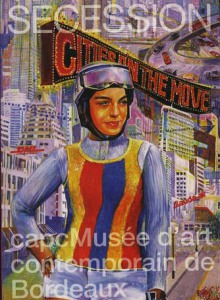
Cities on the Move
Hou Hanru organises Cities on the Move with Hans Ulrich Obrist.
MoMA curator, Barbara London, documents her studio visits in China on the web.
1998
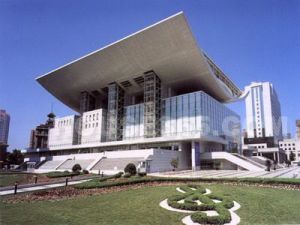
Shanghai Grand Theatre
In October, the Shanghai Grand Theatre opens.
BizArt is founded by Davide Quadrio, followed by Huang Yuanqing and Katelijn Verstraete.
Mondrian’s work is shown at the Beijing International Art Palace with work by 30 Chinese artists sharing similar interests, organised by Hans van Dijk.
Zhang Huan moves to New York.
1999

Jinmao Tower
In March, the 88-story Jinmao Tower in Pudong opens for business. Designed by the Chicago office of Skidmore, Owings, & Merrill, it was the third tallest building in the world and the tallest in China until 2007.

China Art Archives and Warehouse
Hans van Dijk, with collector, Frank Uytterhaegen and artist, Ai Weiwei, founds China Art Archives and Warehouse.
Art for Sale is curated by Alexander Brandt, Xu Zhen and Yang Zhenzhong in Shanghai.
2000
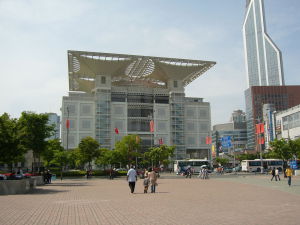
Shanghai Urban Planning Exhibition Centre
In February, Shanghai Urban Planning Exhibition Centre opens the largest facility of its kind worldwide. Its roof is styled as a white magnolia, Shanghai’s floral symbol. The centre is for exhibition, research, study and exchange, education and leisure on the central theme of urban environmental development.
In September, Shanghai Art Museum moves to its present location in the former Race Club clubhouse building, located adjacent to the People’s Square.

The poster of 3rd Shanghai Biennial
Spirit of Shanghai, 3rd Shanghai Biennial, curated by Hou Hanru, features 67 artists from 18 countries.
Zhang Peili exhibits his work at ARCO.
Chen Zhen dies in Paris, where he had moved in 1986.
2001
In December, Shanghai Science and Technology Museum opens to the public. The museum houses an IMAX theatre and exhibits on a range of technology subjects. Shortly after the opening, the museum is drawing an average of 3 million visitors annually.

Homeport
Homeport, initiated by the Rotterdambased non-profit organisation, Cell with BizArt, is presented in Fuxing Park, with videos by Song Tao, Liang Yue, Yang Fudong and Yang Zhenzhong.
2002

The first phase of Xintiandi
The first phase of the Xintiandi development opens, a series of preserved shikumen buildings now formed into a cluster of pedestrianized restaurants, shops and entertainment venues.
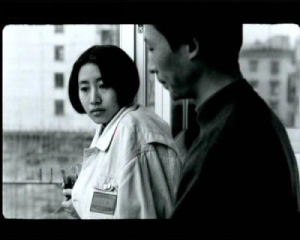
An Estranged Paradise by Yang Fudong
Yang Fudong participates in Documenta 11 in Germany.
Fan Dian, Wu jiang, Li Xu, Yuko Hasegawa and Alanna Heiss co-curate the Shanghai Biennial.
Hou Hanru co-curates the Gwangju Biennial with Charles Esche.
Long March Project invites feminist American artist Judy Chicago to China.
2003

Shanghai’s Maglev Line
On 31st December, Shanghai’s Maglev Line is inaugurated by Jiang Zemin and the German Chancellor Gerhard Schroeder. It is the first commercial line of this kind in the world, connecting Pudong International Airport with the Shanghai subway system. With a top speed of 430 kilometres per hour, the 30 kilometre journey takes only seven minutes.
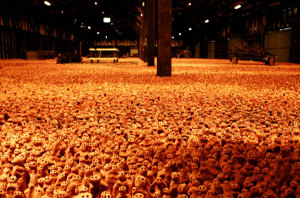
Asian Field by Antony Gormley
Antony Gormley’s Asian Field installation begins tour of China.
China Art Archive and Warehouse host an exhibition of photographs by the late Hans van Dijk.
The Guy and Myriam Ullens Foundation is founded and directed by Fei Dawei.
Hou Hanru curates Zones of Urgency for the Venice Biennial.
2004–2005

The poster of Year of France
Year of France in China – two years of cultural exchange, China in France followed by France in China.
2004
Duolun Museum of Art opens. Exhibitions include Open Sky, a pivotal exhibition for Shanghai artists, and A Short History of Dutch Video Art.

The Monk and the Demon by Fei Dawei
Fei Dawei curates The Monk and the Demon at the Musée d’Art Contemporain in Lyon, France, and All under Heaven at the Museum of Contemporary Art, Antwerp (MuHKA), with the Guy and Myriam Ullens Foundation.
Shanghai Gallery of Art hosts an exhibition of Paris-based Chinese artists.
Between Past and Future: New Photography and Video from China opens in New York and Chicago, curated by Christopher Phillips and Wu Hung.
Mass MoCA in the USA opens a solo show by Cai Guoqiang.

Three on the Bund
In April, Three on the Bund opens, the address marking the former site of the famous ‘old Shanghai’ members’ club, the Shanghai Club with its famed ‘long bar’. It is the first of the former international hangouts along the Bund to be entirely refurbished from top to bottom, and commandeered to meet the aspirations of the latest Shanghai lifestyles and society.
In December, the private development Bridge 8, a so-called lifestyle centre, opens. This follows the announcement of a new Shanghai Municipal Government strategy of supporting the development culture and creative industries.
2005
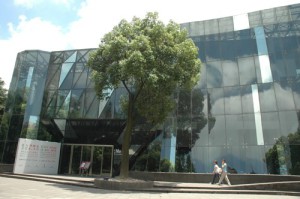
MoCA Shanghai
MoCA Shanghai opens with Pierre & Gilles: Retrospective, organised by Oscar Ho Hing-Kay.
Dutch architecture studio MVRDV presents KM3: Proposals for Chinese Cities, at Shanghai Gallery of Art.
Cai Guoqiang curates the first China Pavilion at the 51st Venice Biennal.
Mahjong opens in Bern, Switzerland, featuring more than 200 works from the Uli Sigg collection.
Bureau Friedrich’s Waling Boers teams up with Pi Li for a commercial gallery space in Beijing.
Karen Smith publishes her book, Nine Lives: The Birth of Avant-Garde Art in New China.
2006
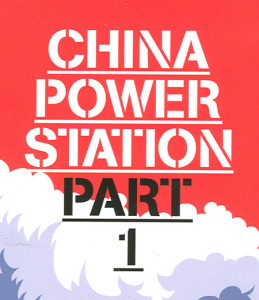
The poster of China Power Station
China Power Station: Part I opens in London. Organised by the Serpentine Gallery.
2007
Shanghai hosts the Guggenheim Museum’s Art in America: Three Hundred Years of Innovation exhibition.
ShContemporary, an international contemporary art fair is established in Shanghai.

UCCA
UCCA, a non-profit, comprehensive art centre, is founded by collectors Guy and Myriam Ullens in Beijing, November 2007.
Shanghai eArts Festival is founded and works in collaboration with Centre Pompidou, Ars Electronica, ZKM Centre for Art and Media and MIT Media Lab.
Arthub Asia is established, a multi-disciplinary organisation devoted to contemporary art creation in China and the rest of Asia, in collaboration with the Prince Claus Foundation as Network Partner.
Fairytale, by artist Ai Weiwei, brings 1001 Chinese people to Documenta 12 in Kassel, Germany.
Long March Project’s Lu Jie and Performa’s Defne Ayas collaborate for Performa ‘07, premiering live projects by Xu Zhen and Qiu Zhijie in New York.
The Chinese language edition of Artforum magazine is published on-line, with Philip Tinari as editor.
2008

Inopportune: Stage One by Cai Guoqiang
The Cai Guoqiang exhibition is presented at the Guggenheim Museum in New York.
The Revolution Continues: New Art from China exhibition opens at the new Saatchi Gallery in London.
Arthub Asia collaborates with Shanghai eArts Festival in 2008, bringing live performances by such artists as Christian Marclay and Feng Mengbo to the public for the first time.
Synthetic Times: Media Art China 2008 opens at the National Art Museum, a Cultural Olympics project featuring many international collaborations, including MoMA.
Zendai MoMA presents Intrude Art & Life 366, a yearlong series of public interventions by local and international artists. Old/ New Routes: A Selection of Video Art from Central Asia at BizArt, curated by Stefan Rusu. Strategies from Within: An Exhibition of Vietnamese and Cambodian Contemporary Art Practices, curated by Biljana Ciric.
Jérôme Sans is appointed as new director of UCCA in Beijing.
2009
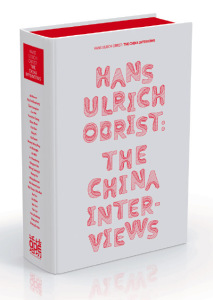
The China Interviews by Hans Ulrich Obrist
Hans Ulrich Obrist publishes The China Interviews.
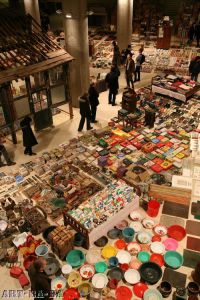
WasteNot by Song Dong at MoMA
Song Dong transforms the contents of his mother’s former home in Beijing into his Waste Not installation at the Museum of Modern Art in New York.
PERFORMA hosts four sessions on architecture, graphic design, noise music and film in Shanghai, inspired by the centenary of the publication of F.T. Marinetti’s Futurist Manifesto, republished in Shanghai in the 1920s.

Ten Thousand Waves by Isaac Julien
British filmmaker Isaac Julien begins filming in China.
The India-China Year. India Xianzai: Contemporary Indian Art is held at MoCA Shanghai | Art Culture, in collaboration with an auction house.
2010
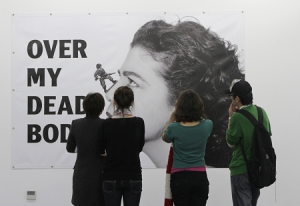
British Council Collection
British Council Collection is presented at the Minsheng Art Museum, Shanghai.
French curator Ami Barak organises Shanghai World Expo 2010 Boulevard.
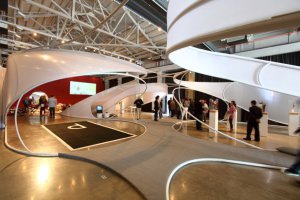
Double Infinity at the Dutch Culture Center, Shanghai Expo
The Van Abbemuseum collaborates with Arthub Asia as part of the Dutch pavilion of the Shanghai WorldExpo 2010 in May, 2010.
British magazine New Statesman listed Chinese best-selling author Han Han at 48th place in the list of “The World’s Most Influential Figures 2010”
[1] See catalogue of Tokyo – Berlin / Berlin – Tokyo exhibition by David Elliott (2006).
[2] 参见David Elliott(2006) 《东京 – 柏林/柏林 – 东京》展的展览目录
[3] “Factography” was based on the idea that the writer and photographer should adopt the role of reporters in order to reflect the growth and power of the proletariat.
[4] “纪实风格”的核心概念是作者和摄影师应当像记者那样反映工人阶级的成长和力量。
Endnote: This timeline is not complete, and probably never could be, given the wealth of histories, discourses, twists and turns in China’s soft history of art in relation to the rest of the world. This timeline stands as a suggestive interpretation only, and should be seen and treated as a work in progress. It is compiled by one of Arthub’s directors, Defne Ayas, with contributions by Leo Xu, Francesca Tarocco and Mathieu Borysevicz. Sources include Inside Out (exhibition catalogue), Shanghai Modern 1919–1945 (exhibition catalogue), Art and China’s Revolution (exhibition catalogue) and Art and Artists of Twentieth-century China by Michael Sullivan.

